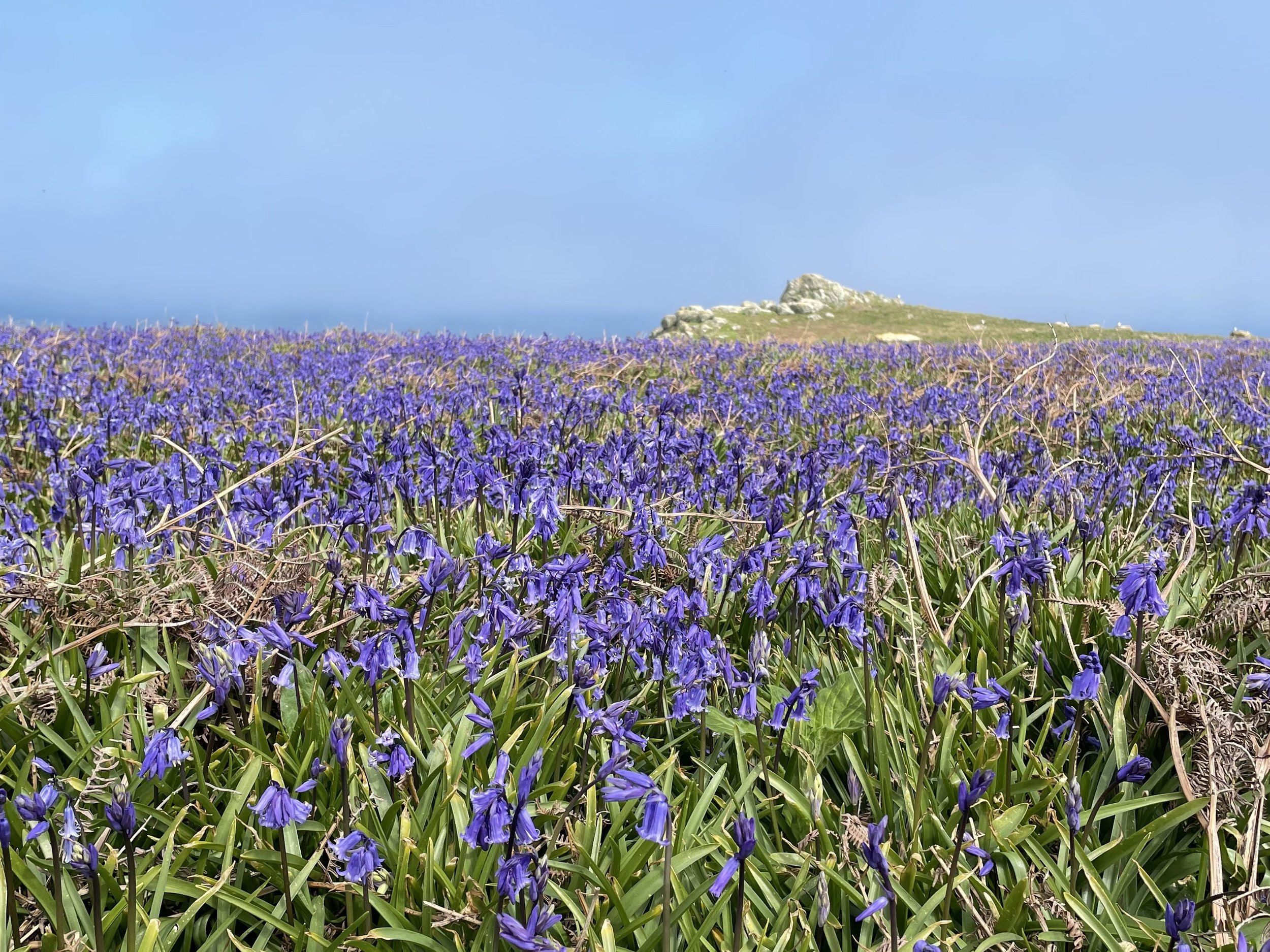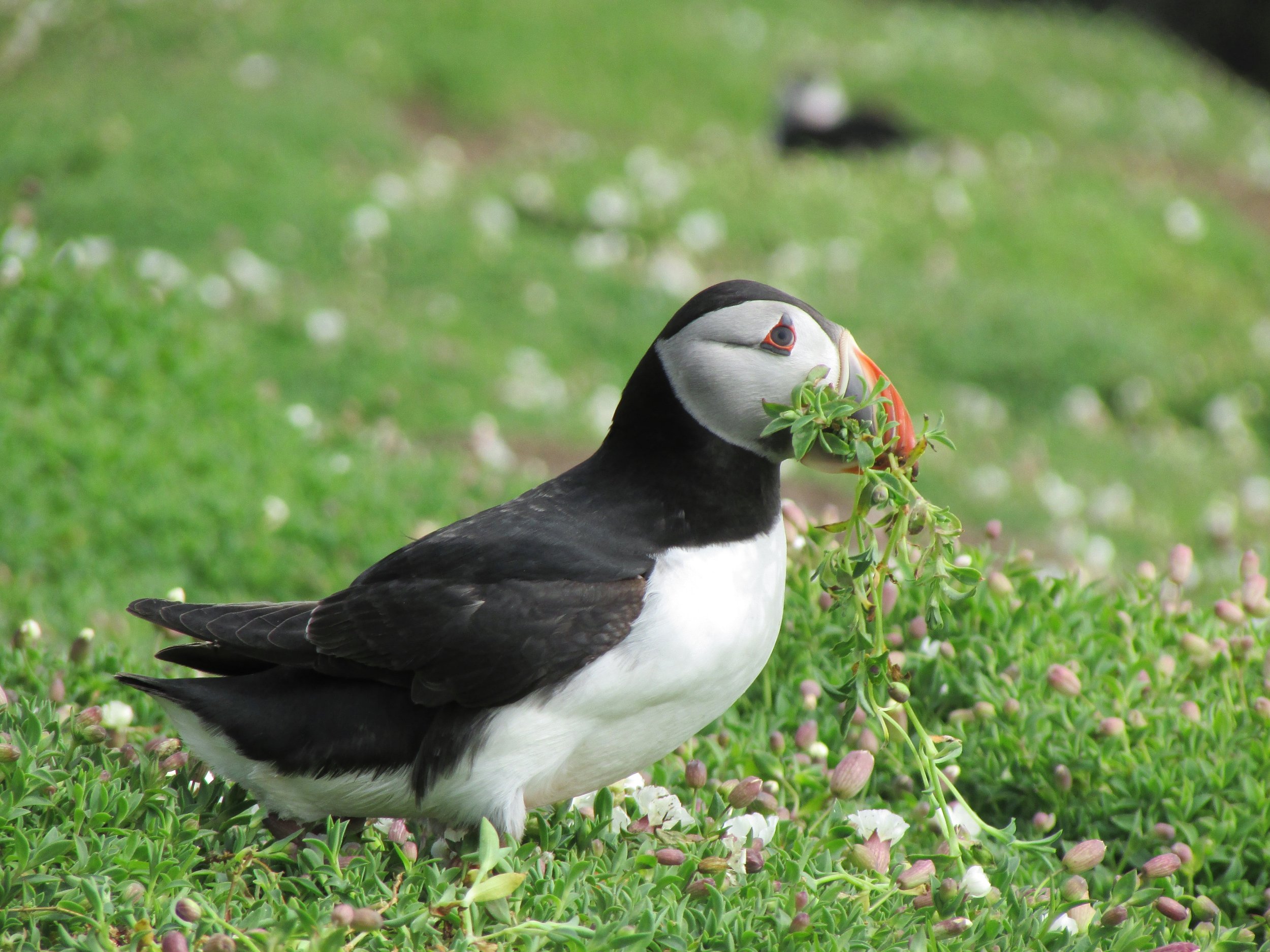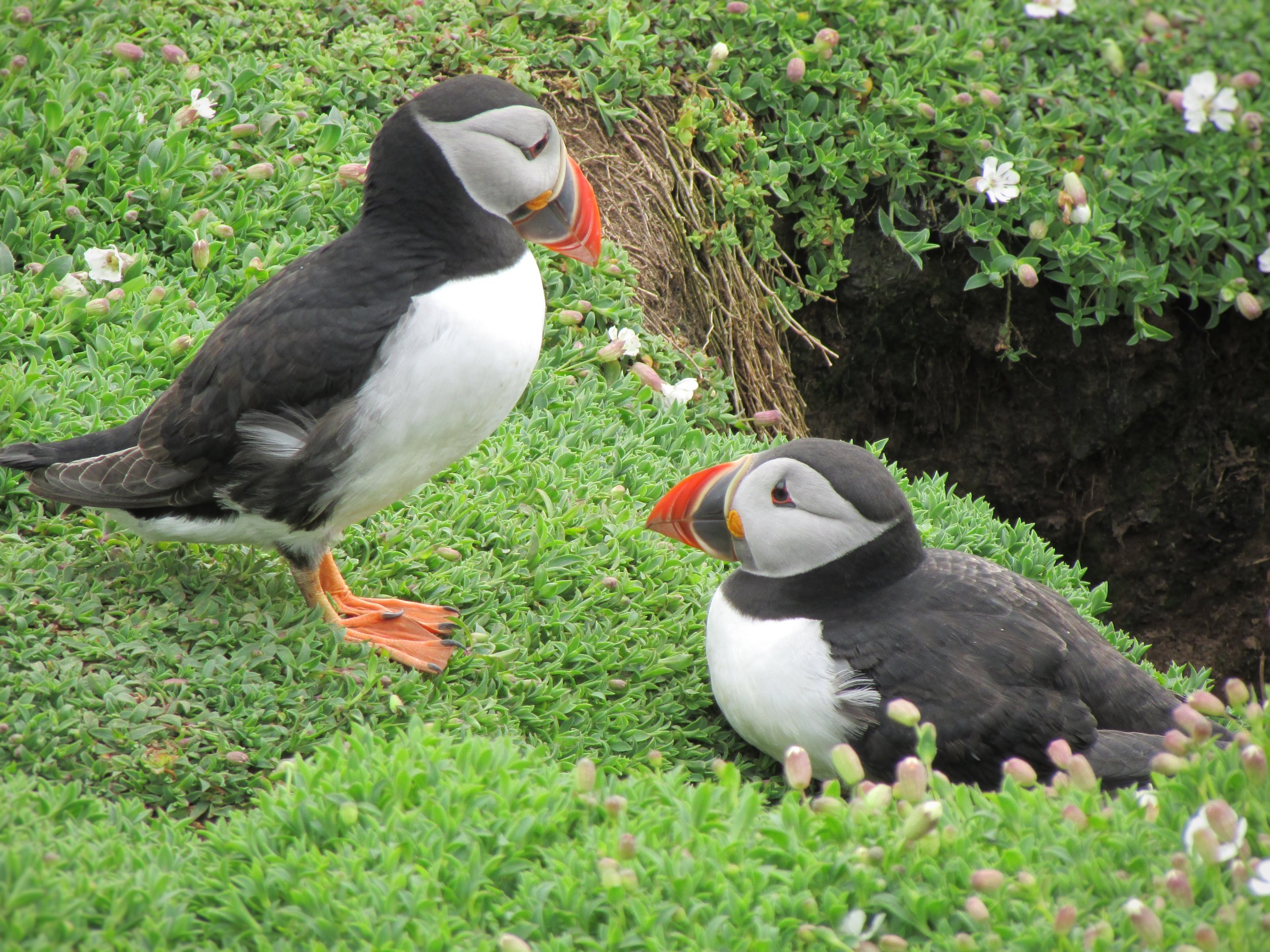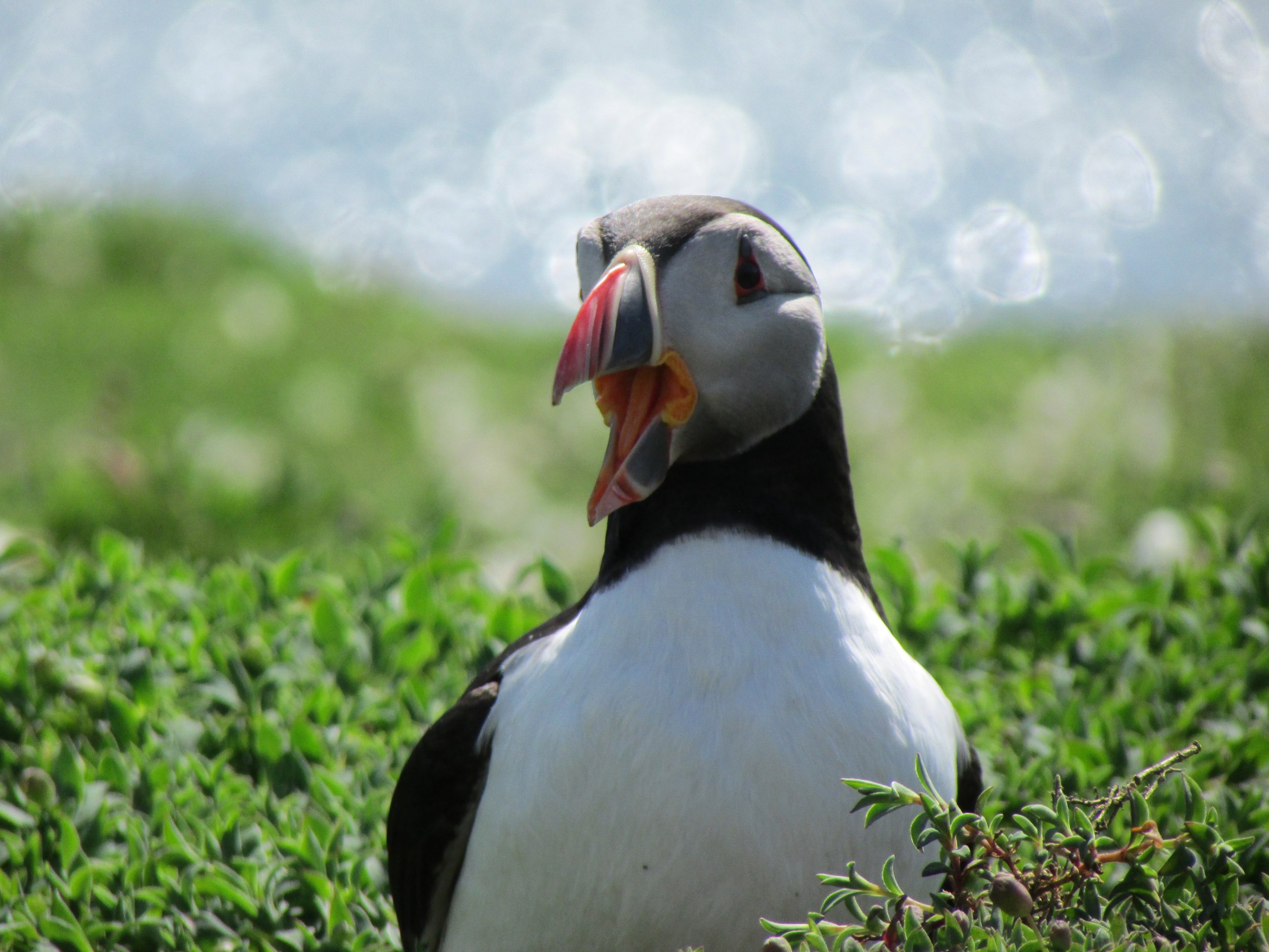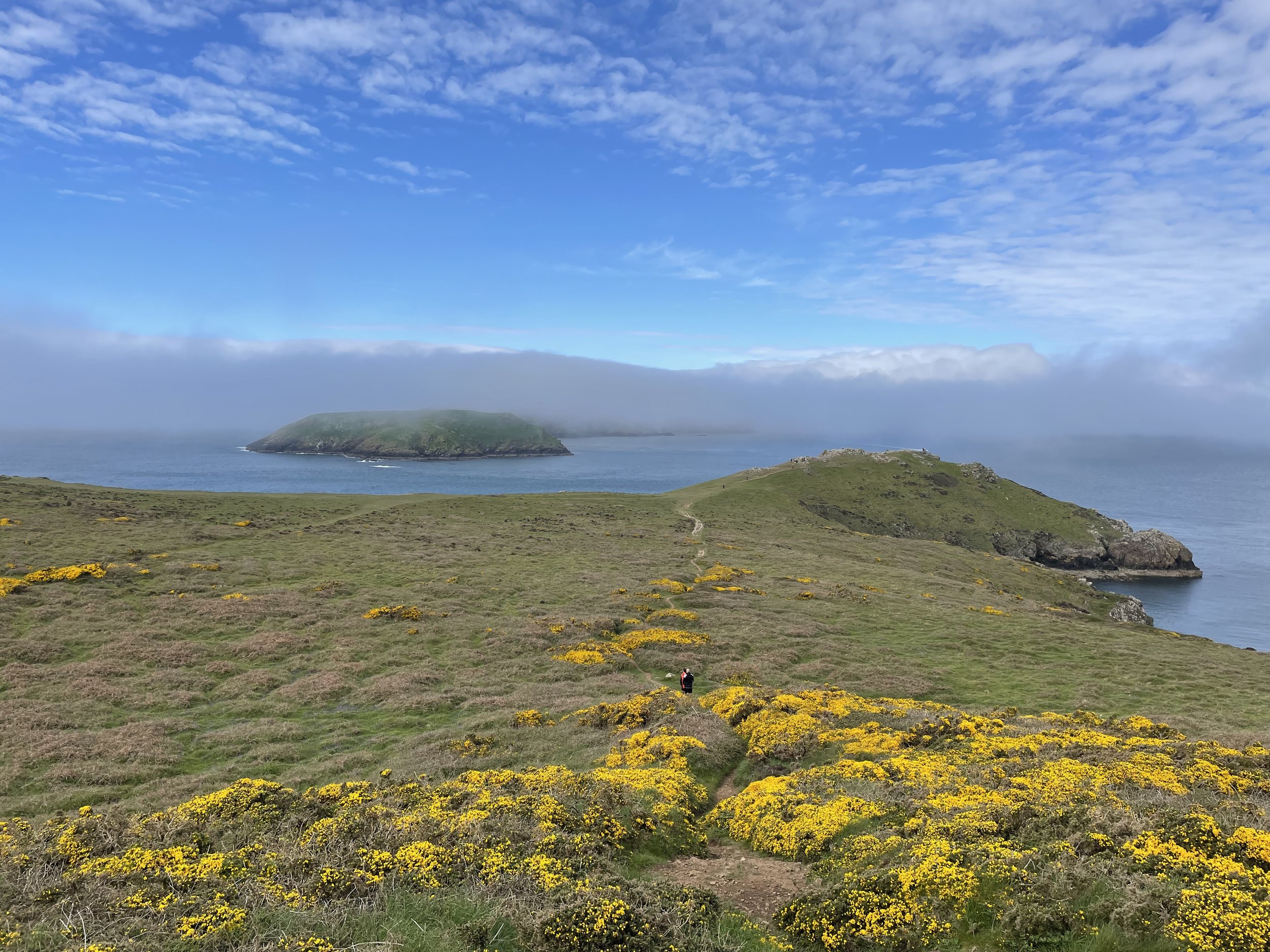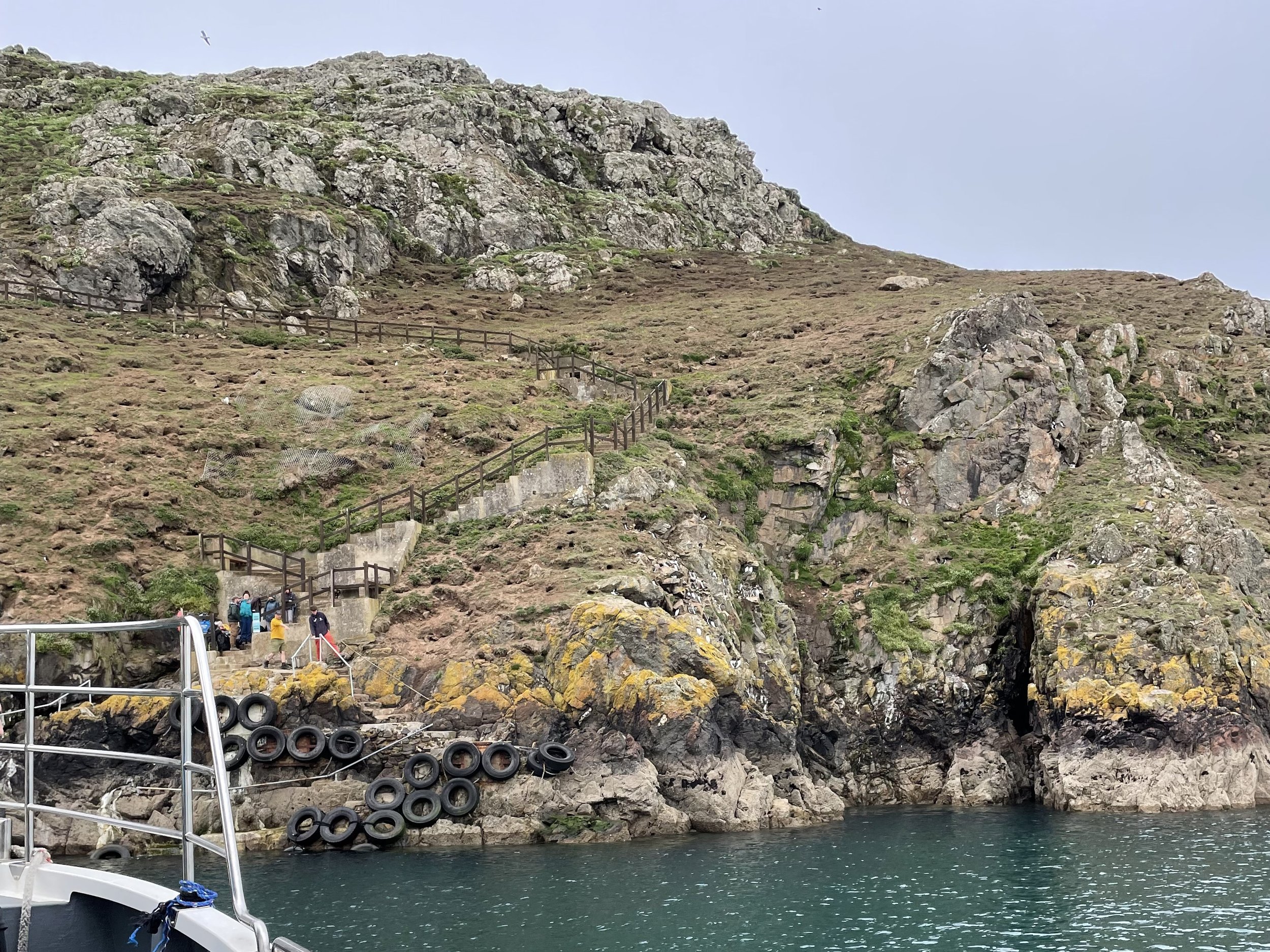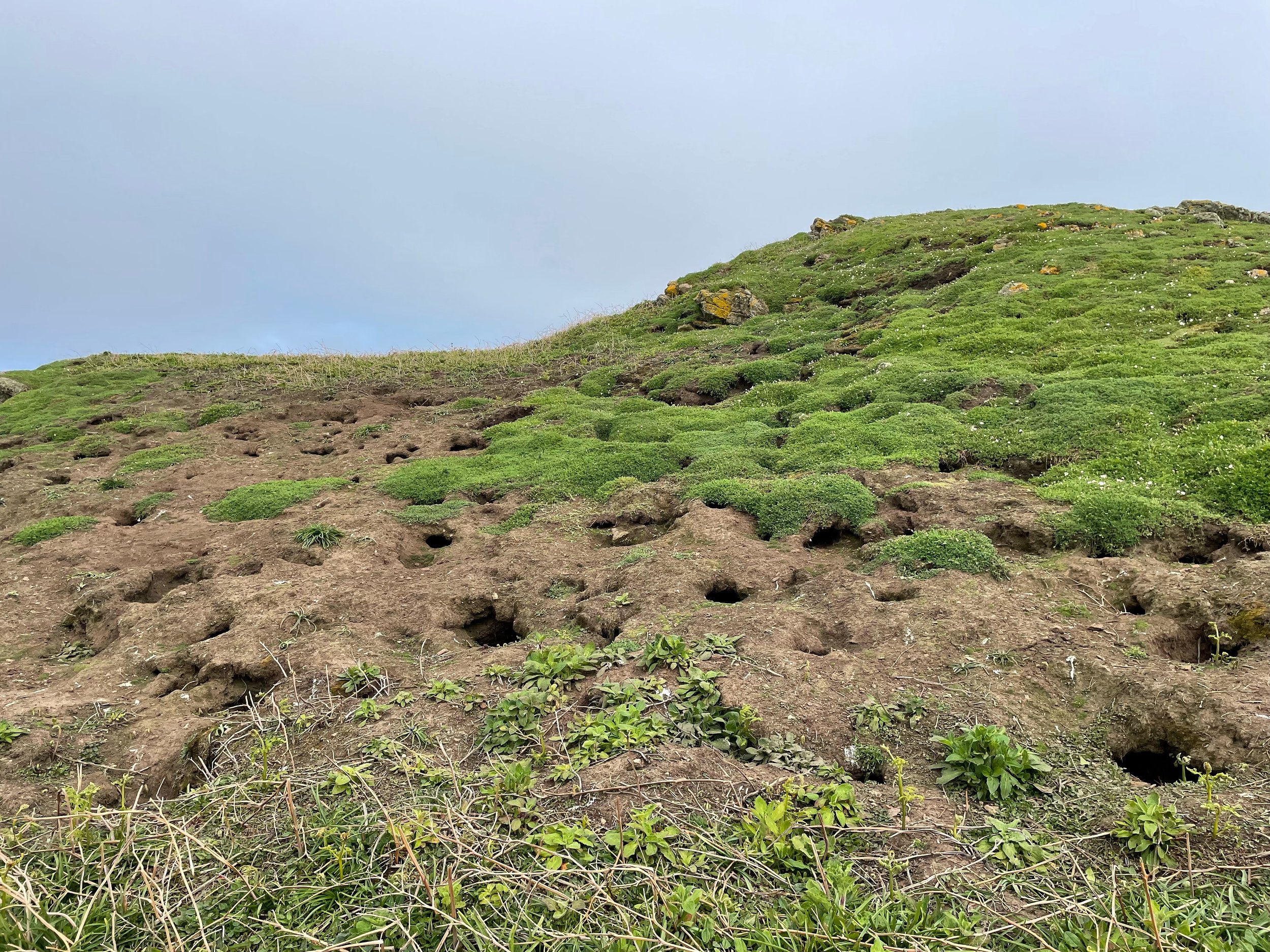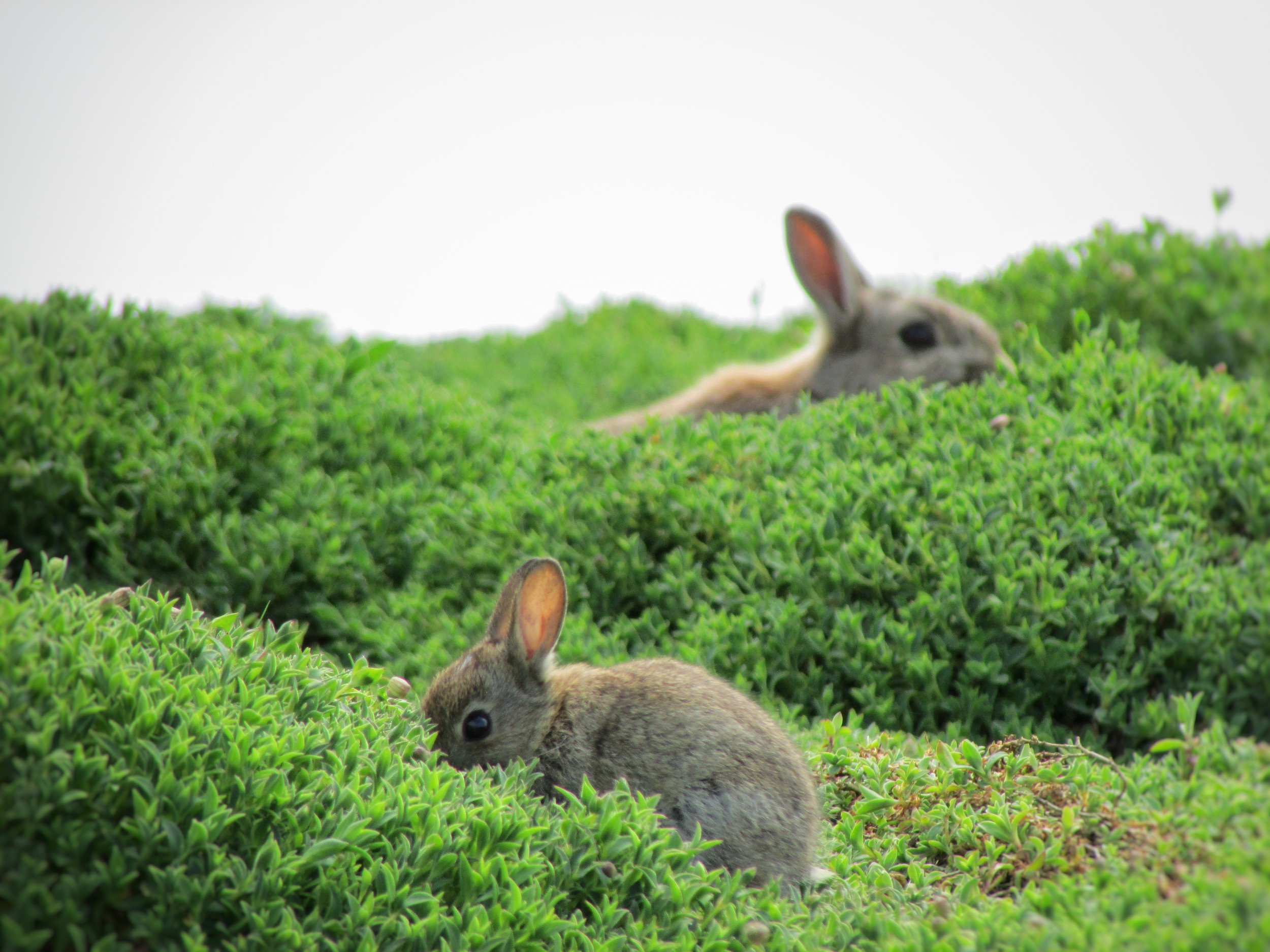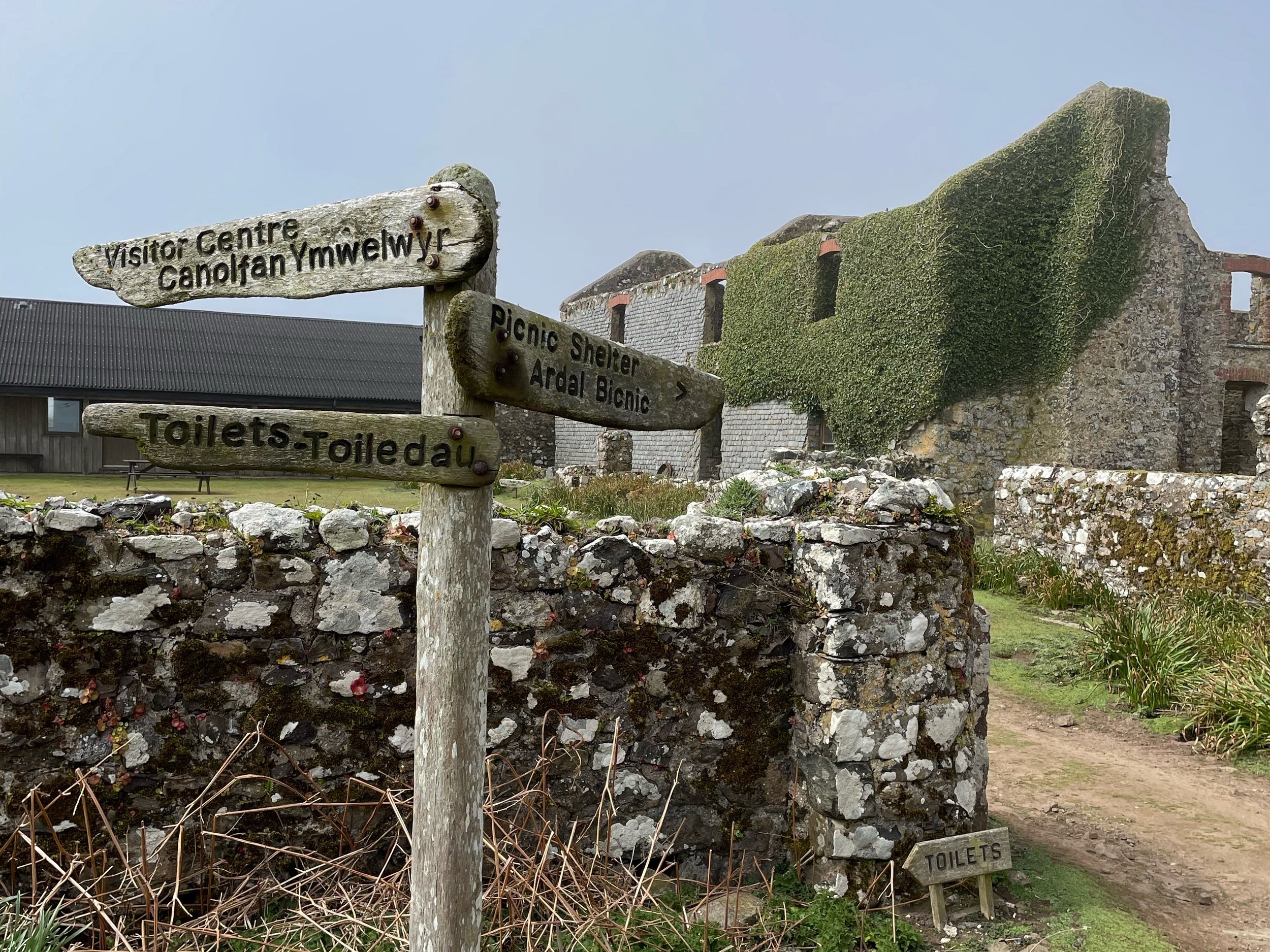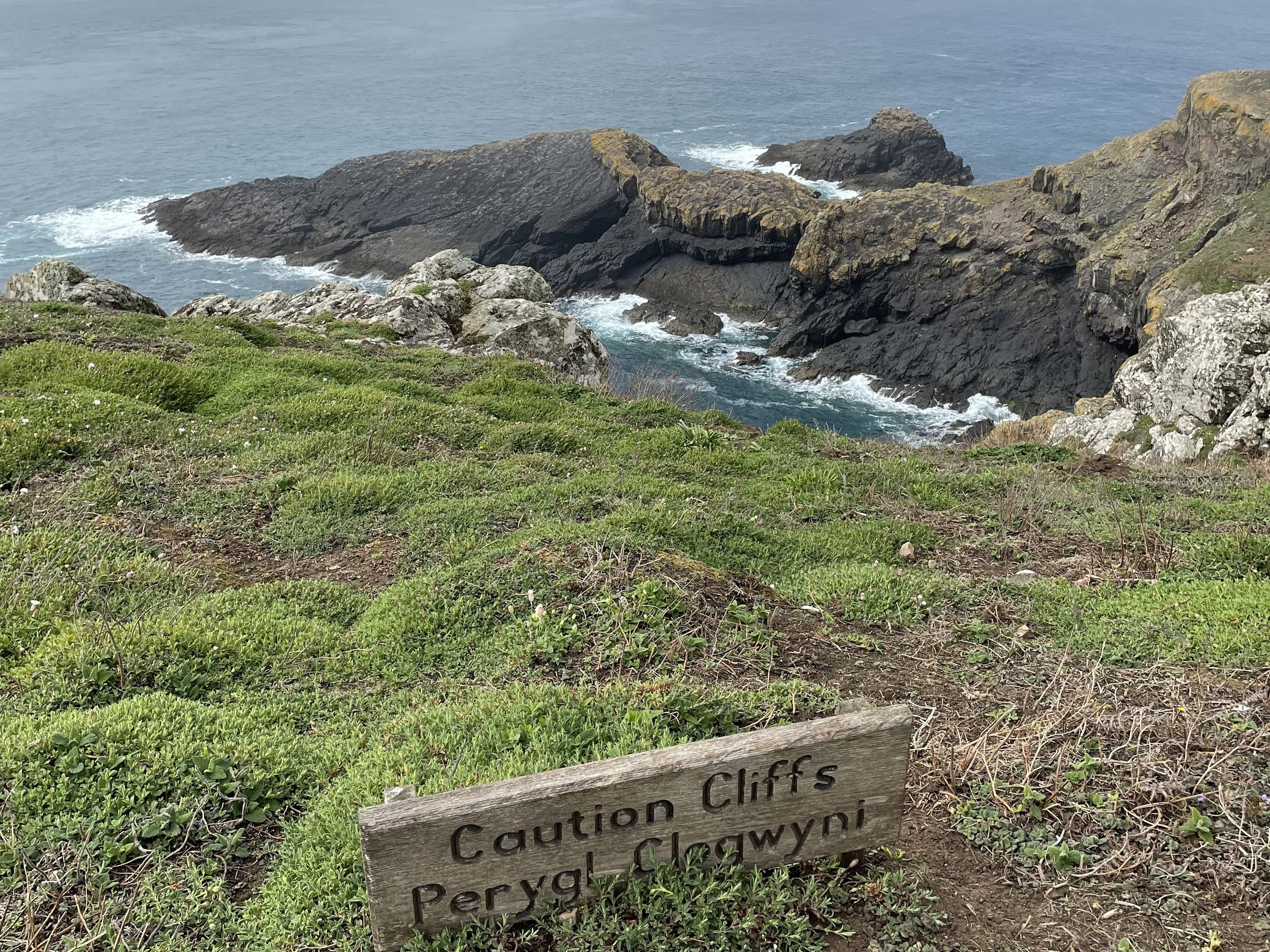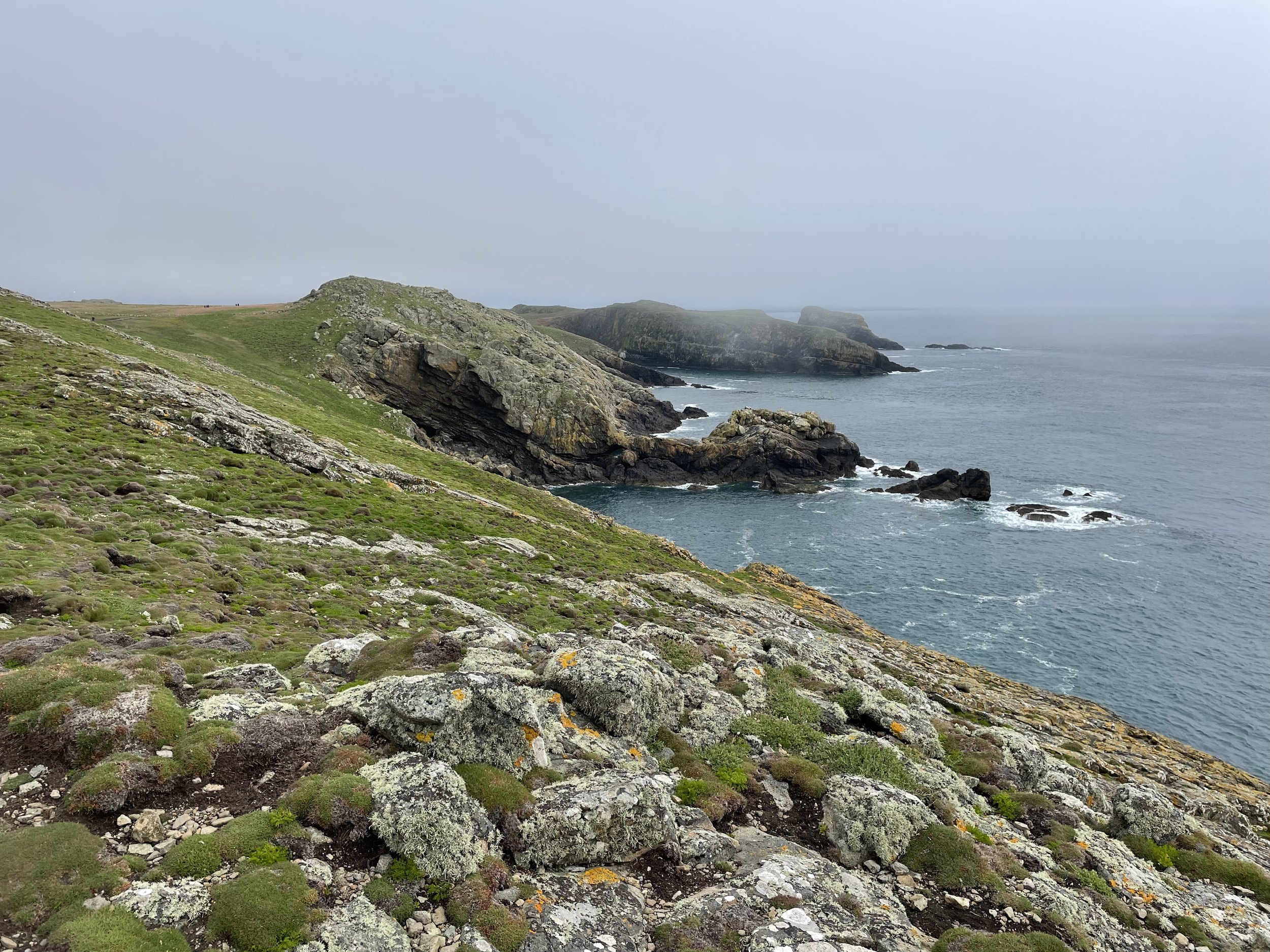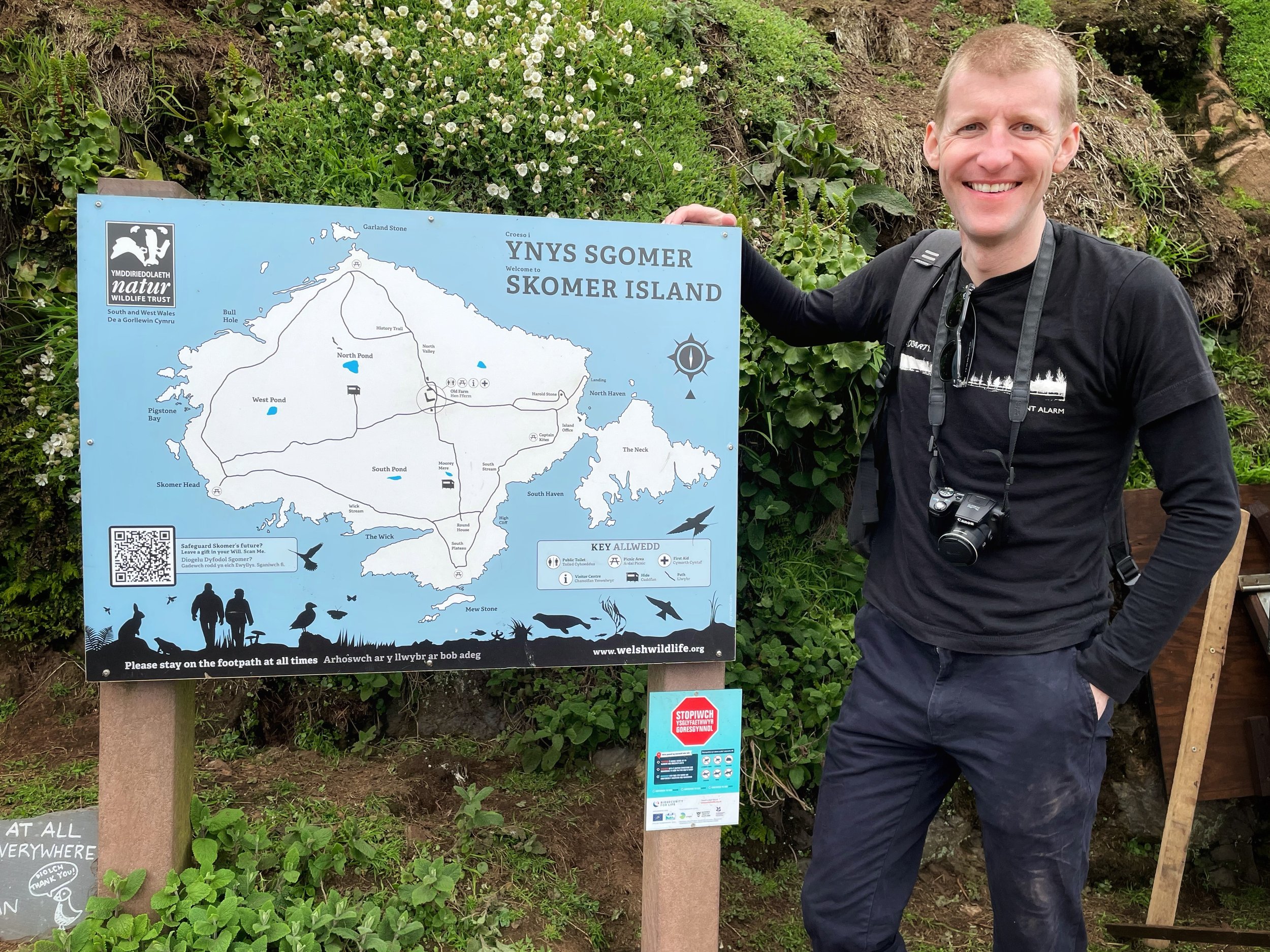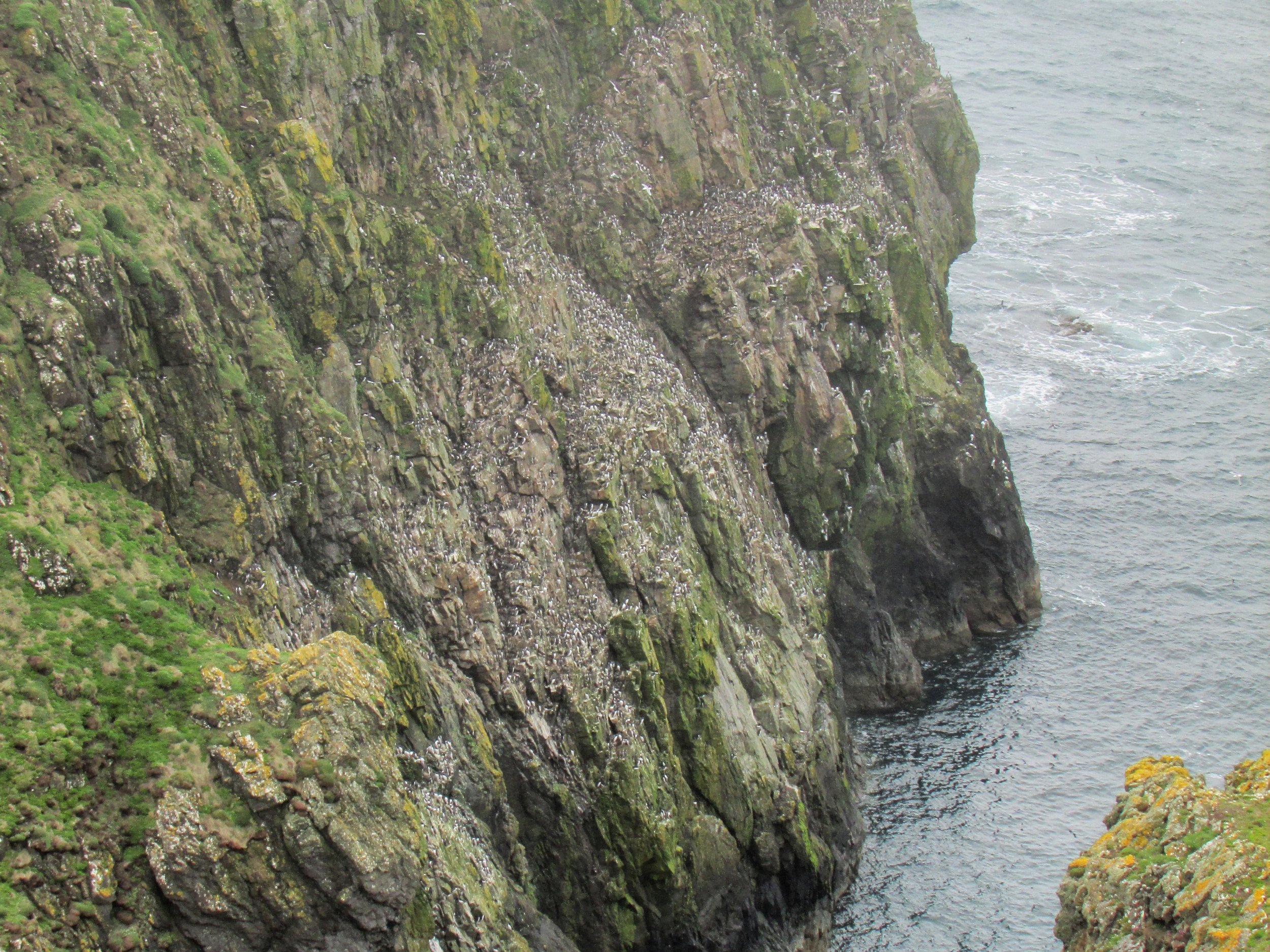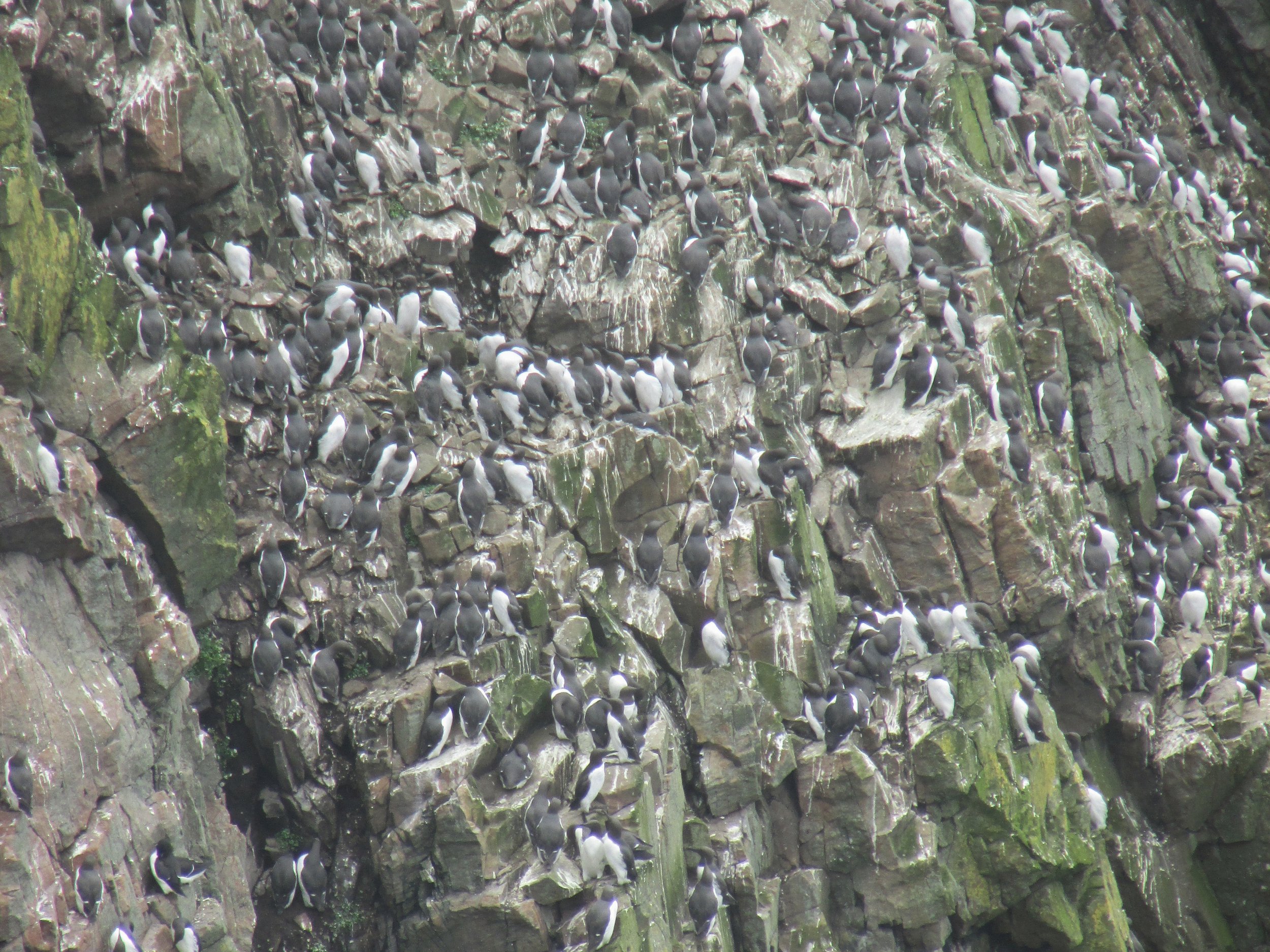'Pilgrimage to Puffin Paradise' - Birdwatching on Skomer Island, Wales
/The fog feigned a final farewell, and sunlight glinted again on the spongey grass-covered southern slopes of Skomer Island.
We had circumnavigated this 3 km2 asteroid-sized rock of research as two of the few human astronauts allowed on it at a time.
We had bounded through the blossoming bluebell fields on its northern side; encountered rabbits, ruins, and all the creatures and features of this isolated speck of land off the southwestern tip of Wales—but there hadn’t been a puffin’ puffin in sight for hours since we landed on the remote seabird breeding colony. Maybe they were holed up somewhere.
Sure, we received a warm welcome from our tiny, tuxedoed hosts straight off the ferry at North Haven Bay.
Yet, in an ironic twist, we had traipsed away from where the main attraction appeared to be, hopeful for many more of these smartly dressed black-and-white birds to pop up along the paths snaking through this treeless territory.
Only upon arriving at “The Wick” some hours later did my partner and I wander back into puffin paradise again and witness the serene seabirds going about their business on the sheltered stretch of land.
Dozens of soon-to-be parents were pottering about here, finding foliage for their underground burrows, and appreciating the April afternoon sunshine with scant concern for their gawking guests.
A Springtime Symphony
Spring is nesting season on Skomer, so you’re more likely to see a puffin with a mouthful of decor than a fish dish to feed their young chicks (called "pufflings"), who are expected to enter this world from June to July.
It was why we were in Wales, placing a protected nature experience at the heart of our journey from home in urban London, England, to a rugged, rural corner of the principality next door. But why puffins, perchance?
These pint-sized seabirds can only be found in the Northern Hemisphere, which attracted us South Africans, who are more accustomed to the size and appearance of penguins occupying the southern oceans. And boat tours like Pembrokeshire Islands Boat Trips provide the only opportunity to land on one of the most important seabird sites in southern Britain and meet their two-toned cousins up close and personal.
The rest of the trip thus revolved around this day-long rendezvous on the island, located a kilometre or so from the shore, as we left the hired car, an evening in the seaside town of Tenby, and a few days of sightseeing in the capital city of Cardiff behind us in search of avian adventure.
Our short spurt across the strait was smooth sailing, but soon steep cliffs loomed through the morning mist like ancient giants waking from the salty sea’s embrace.
Faced with few, if any, beaches, the only way to land on Skomer after the 15-minute crossing is by hopping onto a small natural jetty and trudging up 87 steps to the top of the ridge. Wings would be helpful in such a situation.
Although you’ve now ascended to puffin paradise, they take biosecurity very seriously here.
Visitors are expected to keep our feathered friends protected from land-based predators by ensuring, for example, that no rats climb aboard at Martin’s Haven on the mainland. However, the three Golden Rules written on the welcoming chalkboard sign and enforced by the Wildlife Trust of South & West Wales indicate that a much larger animal, known as the human, may be the greatest threat to this fragile ecosystem.
The landscape is densely pockmarked with burrows, to the point where one peninsula is so dug up that even expert researchers cannot safely go there without inflicting damage. It makes rule number one—stay on the paths—not just a guideline, but the guiding principle of any excursion (and you need to watch where you put your backpack too, as burrows could be right on the edge of the path). But who’s doing all the dirty work? Rabbits.
You see, puffins only breed in burrows but aren’t designed to hollow out the homes themselves. That’s why they’re in a tenant-landlord relationship with the rabbits, first introduced to the island in the 14th century. These furry excavators skittishly avoid human contact and have enough holes to hang out in that many become vacant, readily reclaimed by the puffins.
Refuge in the Remnants
Skomer is for the birds though, with a terrain mostly carpeted in shrubs and grass that offers minimal shade, save for the shelter of several strategically placed hides.
Central to the island’s rugged charm are the 200-year-old farmhouse ruins, remnants of a bygone era now serving as the only public respite from the elements. Lightly renovated and restored at the start of the 21st century, this is where you’ll find the only toilets for miles (eco-friendly composting ones) and a 16-sleeper hostel that requires a reservation for an overnight stay.
We ate our packed lunch inside the crumbling quarters while obeying rule number two—take your rubbish home—and playing our part in preserving the balance of Skomer’s brittle biosphere. Fortified by our mainland meal deal, we then set off on our 6.5 km-long route, ready to explore more of this hallowed haven.
Personal Perceptions of a Wild Isle
Our preconceptions of puffins did diverge from the reality of a close encounter.
Far smaller than penguins, their diminutive stature surprised us, as they stand on land at about 20 cm tall, whereas penguins can range from 30 cm to over one metre. Their deep, guttural calls also broadcast a stark contrast between size & sound, and we saw delicate displays of affection between birds, such as tapping and rubbing their beaks together in a touching sign of social behaviour. Unlike penguins, these guys can fly, with their incredibly flexible hinge beaks enabling their jaws to carry multiple small fish simultaneously when in flight.
The deep, guttural call of a puffin on Skomer Island, Wales
This visit to Skomer also coincided with the island being featured twice in ‘Wild Isles’, Sir David Attenborough’s latest nature documentary series with the BBC, which premiered only one month before our trip.
Although we had been broadly aware of the series, we hadn’t seen any episodes before leaving. It wasn’t until we returned home that we realised we had walked the very paths around 'The Wick' as Sir David had, feeling a surreal firsthand connection to his narration.
While puffins got prime viewing on screen in episode one, our perspective of the place was fortunately not all puffed up.
The series shines a light in episode five on Skomer’s status as one of the world's largest Manx shearwater colonies. Unfortunately, it’s a species that can only be seen after dark and in caves along the island's coasts, so not something suitable for us day-trippers.
But the guillemots were a staggering sight and sonic experience to behold in person, as cacophonous groups of hundreds, if not thousands, of squawking birds clung to the cliff faces, protecting their nests from predatory gulls.
Standing where Attenborough once stood, I too felt the wonder and wild beauty that places like Skomer have to offer. Outnumbered by locals and far from home comforts, it reinforced the irreplaceable value of our world’s natural habitats and humanity’s responsibility for preserving them.
Aboard the ferry again, I observed rule number three: respect the environment, and bring all your memories back with you.



